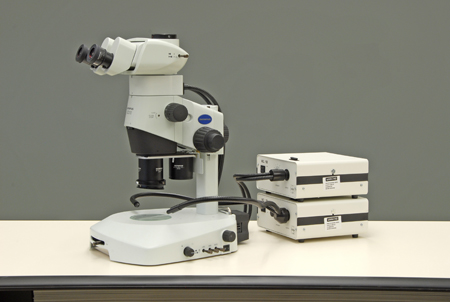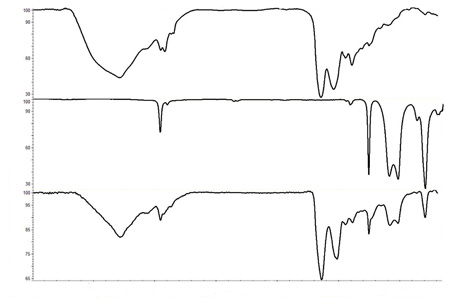Particulates in parenteral drug products are a concern in the pharmaceutical industry and require preventative action. Gretchen Shearer, McCrone Associates, looks at techniques for identifying protein aggregates.
The presence of protein aggregates or protein/silicone aggregates in therapeutic protein drugs is a potential problem.
Evidence suggests that protein aggregates can increase the immune response, which may result in undesirable events or outcomes. Parenteral drugs (drug products packaged for injection into the patient) are, therefore, required by regulatory agencies to be essentially free of visible particles, and there are limits for sub-visible particles. It is important to identify these particles to evaluate the potential hazards and to eliminate future particle problems.
Pharmaceutical and biopharmaceutical companies are becoming increasingly interested in obtaining a better understanding of the chemical composition, amount and size of protein/silicone aggregates.
There are several different types of protein aggregates, but for the purposes of this article, protein aggregates are defined as insoluble material that can be recovered from solution by filtration and can be observed in a product vial as a haze or as visible particulate (parenteral drugs are usually contained in glass vials, but syringes and ampoules may also be used).
The size of visible particles or particles that can be seen without magnification has not been clearly defined; it is dependent on several factors, including lighting conditions, the eyesight and training of the inspector, and the type of particle. It is important to examine a vial or syringe using bright light and fibre optic light against both white and dark backgrounds. With proper training and lighting conditions, particles of approximately 100µm in size may be observed.
The size of visible particles or particles that can be seen without magnification is dependent on several factors, including lighting conditions, the eyesight and training of the inspector, and the type of particle
The mechanism of protein aggregate formation is not fully understood but it is thought to be related to chemical bond formation between protein monomers. Protein aggregates are often, but not always, associated with silicone.
Silicone is a generic term for a family of siloxane-based lubricants; the most common one is poly(dimethylsiloxane). Silicone is used to provide lubricity for stoppers in vials and plungers in syringes, and has many other applications in a variety of industries including cosmetics and personal care products, speciality paper and containers.
The role of silicone in the formation of aggregates is also not fully understood. Some researchers have proposed that aggregates form due to the interaction of protein surfaces, which cause a loss of solubility, or possibly through solvent effects.
Protein aggregation can be initiated at many points during manufacture and packaging. It is important to control manufacturing conditions to minimise the formation of aggregates. One way is by reducing the amount of silicone that comes into contact with the drug product. In the past, vial stoppers were coated with silicone prior to insertion into vials. Many manufacturers have reduced the potential for silicone interaction by using a fluoropolymer coating on stopper product contact surfaces to provide the necessary lubrication. However, some manufacturers continue to use silicone on areas that do not come into contact with the product, including the tops of stoppers.
Use of microanalysis techniques
Protein aggregates often present as a hazy appearance in solution or as fine particles. When samples are analysed in our laboratory, the first step is to examine the solution in its original vial or packaging using a stereomicroscope and various types of lighting. The particulate can appear as fine particles; elongated, stringy, fibre-like particles; globular particles; or particles with a web-like or sheet morphology. The particles can sometimes be difficult to see using transmitted light; stereomicroscopes that have indirect lighting are useful for seeing this type of material.
The particles are isolated by filtration onto a filter membrane. The most commonly used membranes in our laboratories are polycarbonate filters with pore sizes from 0.4µm to 1µm. These membranes have a smooth surface for the examination and isolation of particles. Gridded mixed cellulose ester filters (MCE) that are used for particle counting are not ideal for protein and protein/silicone aggregates: these aggregate deposits are very thin and difficult to see on the MCE filter surface.
The filter membrane is then examined using a stereomicroscope (Figure 3). The proteinaceous particulate usually appears as a thin, fine residue that is observed only when using the correct illumination. Coaxial light or reflected light are the optimal methods for visualising the thin residues. Because the particles are thin, they do not have shadows and thus are not readily visible using oblique or side lighting. A photomicrograph of the residue on a polycarbonate membrane with coaxial illumination is shown in Figure 2.
The particulate residue is then gently scraped from the filter using a fine tungsten needle and pressed into a thin film on a polished potassium bromide salt plate in preparation for analysis using micro-Fourier transform infrared spectroscopy (FTIR) in transmission mode.

Figure 3: Olympus SZX10 stereomicroscope with coaxial illumination
FTIR is a method used for the identification of organic materials and some inorganic compounds. With FTIR, it can be determined if the residue is indeed protein. Silicone has a very distinctive infrared spectrum, therefore it is also possible to determine if it is present. Proteins have a characteristic infrared spectrum; however, FTIR cannot identify specific proteins.
FTIR can be used to identify other types of particles and residues, and can be used to rule out protein and protein/silicone residues. It can also determine whether the haze is due to some other material. Examples of protein, silicone and protein/silicone FTIR spectra are shown in Figure 4.

Figure 4: Infrared spectra of (top) protein, (middle) silicone oil and (bottom) protein/silicone aggregate
An alternative method used in some laboratories is to filter the solution onto a gold-coated filter membrane and then record the spectrum in reflectance mode. This method, called reflectance FTIR, removes the need to isolate the particulate residue from the filter. Reflectance FTIR can introduce artefacts in the spectra due to scattering, and it is important to keep these potential interferences in mind when comparing the spectra with reference libraries collected using transmission FTIR.
As mentioned earlier, the role that silicone plays in the formation of protein aggregates is not fully understood. We have attempted to rinse/remove the silicone from the protein residue by means of microextraction/rinsing using hydrocarbon-based solvents. However, we have not been successful in removing the silicone completely. This suggests that silicone is forming some type of bonded complex with the protein.
It may also be useful to prepare the residue for elemental analysis using scanning electron microscopy equipped with energy dispersive x-ray spectrometry (SEM/EDS). This analysis is used to detect inorganic components that may not be observable using FTIR.
It is also necessary to obtain particle count and size distributions of particulate in parenteral formulations, including therapeutic protein drugs. Protein and protein/silicone aggregates collapse onto the filter membrane, often changing shape and size. Thus, attempts to count or size the residue on the filter are not usually recommended.
The USP <788> method (functionally equivalent to European Pharmacopoeia, Ph. Eur. Particulate Contamination: Sub-Visible Particles 2.9.19) is traditionally used to determine the number and size range of extraneous particulates in parenteral solutions. USP <788> contains two methods: Method 1, which includes light obscuration methods such as HIAC, and Method 2, which is a manual count of particles isolated by filtration.
Method 2 does not count the amorphous proteinaceous material because the protein is not present as discrete particles.
The light obscuration methods such as HIAC are more amenable to particle sizing and counting of proteinaceous particles in solution, but the isolation and FTIR analysis provides unambiguous identification of the particulate.
Bibliography
1. Mary M.E. Cromwell, Eric Hilario and Fred Jacobson, Protein Aggregation and Bioproccessing, The AAPS Journal, 2006, Article 66 (http://www.aapsj.org)
2. L.S. Jones, A. Kaufmann and C.R. Middaugh, Silicone oil induced aggregation of proteins, J. Pharm. Sci. 2005 April: 94(4) 918-27
3. The United States Pharmacopeial Convention, <788> Particulate Matter in Injections. http://www.usp.org/pdf/EN/USPNF/788ParticulateMatter.pdf
Footnote
Gretchen Shearer is a senior research chemist at McCrone Associates, Inc. She co-teaches Pharmaceutical Materials and Contaminants (MEI-630) and The Fundamentals of FTIR (INS-524) at the education division of Hooke College of Applied Sciences, the education division of The McCrone Group, Westmont, Illinois, US. This college offers various courses that provide hands-on instruction in identifying visible and subvisible particulates.




